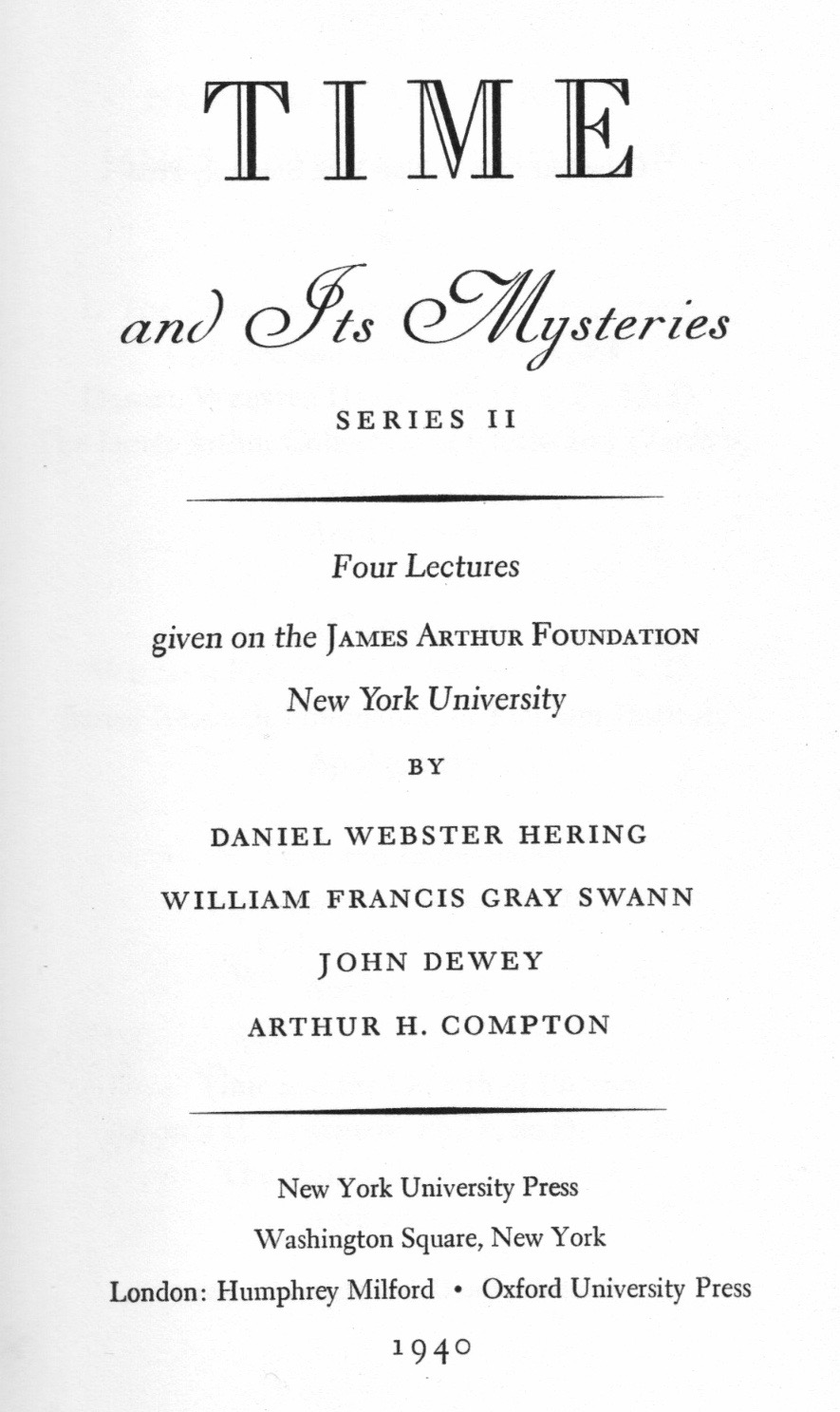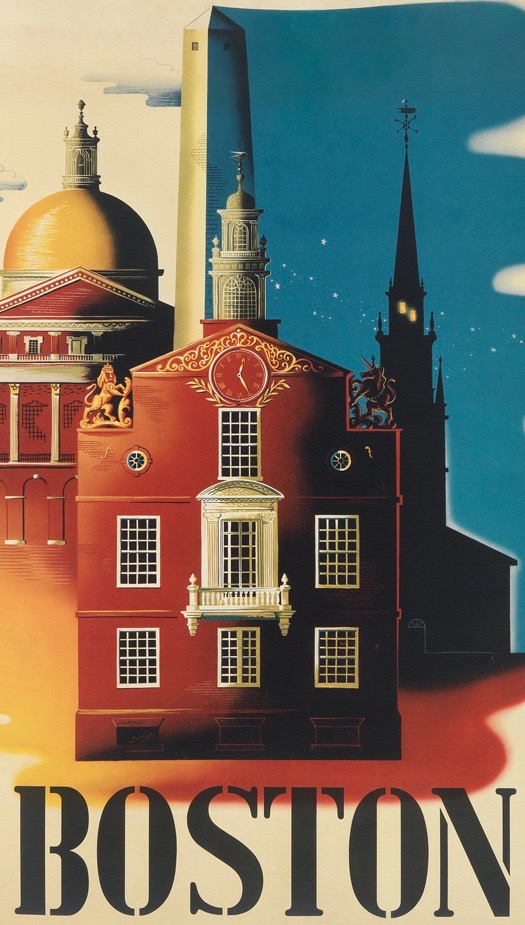History of the James Arthur Lecture Series
James Arthur was born February 26, 1842, of Scottish parents at Crosscandley, Ireland. While he was still a child the family moved to Glasgow where he attended the technical school and trained in mechanics, metal and woodwork. At this early age he took an interest in horology and made sundials and started restoring and collecting clocks and watches. In November 1871 he came to the USA. His wife and the three older children followed in 1872. James Arthur was a skilled mechanic with knowledge of machinery and fine construction. Fourteen years after coming to the USA he established the Arthur Machine Works at 188-190 Front Street, New York, for the manufacture and repair of machinery in general and in particular for the construction of models for inventors. The business proved lucrative, as he was able to make a world tour in 1897, and added many interesting pieces to his collection throughout his lifetime. He continued working until he retired in 1912. He died at Winsted, Connecticut, April 27, 1930.
On December 1, 1925, he donated his horological collection together with a substantial endowment to New York University, specifying that part of the endowment should fund an annual lecture. Daniel W. Hering, Professor Emeritus of Physics, was appointed Curator. The original collection of 1,336 items was enlarged, principally by donation, so that by 1932 it amounted to 1,464 items made up of 224 clocks, 1,190 watches, and 50 books. Of particular interest are the original tallcase clocks he designed and made. His notebook No. 1 contains the original designs of 13 tallcase clocks built in his shop by himself or his workmen.
New York University never completed the reassembly and display of the items and, in 1964, they moved from University Heights to the present location in Greenwich Village. At that time they transferred most of the collection to the Smithsonian Institution. In 1982 New York University decided to dispose of the Arthur Collection, dividing the items between The Smithsonian Institution, the Time Museum at Rockford, and the NAWCC Museum at Columbia, Pennsylvania.
Ward Francillon was instrumental in making the James Arthur Lecture the keynote lecture of the Annual NAWCC Seminar, continuing that part of Arthur's original legacy which NYU had fulfilled only intermittently. The first NAWCC James Arthur Lecture was at the 1984 Seminar in Hartford, Conn.
James Arthur Lecture Series
"Time and Its Mysteries" Sponsored by New York University 1932-1984
1932 Time - Robert Andrews Millikan
1933 Time and Change in History - John Campbell Merriam
1934 On the Life-time of a Galaxy - Harlow Shapley
1935 The Beginnings of Time Measurement and the Origins of Our Calendar - James Henry Breasted
1936 The Time Concept and Time Sense Among Cultured and Uncultured Peoples
- Daniel Webster Hering
1937 What is Time? - William Francis Gray Swann
1938 Time and Individuality - John Dewey
1939 Time and the Growth of Physics - Arthur H. Compton
1940 The Astronomical Scale - Henry Norris Russell
1941 The Geologic Records of Time - Adolph Knopf
1946 Time and Historical Perspective - James T. Shotwell
1949 Developments in Portable Timepieces - George P. Luckey
1951 The Early American Clock Making Industry - Brooks Palmer
1953 From Hours to Microseconds: Three Centuries of Timekeeping Progress -
Arthur L. Rawlings
1969 The Hypothesis of Environmental Timing of the Clock - Frank A. Brown, Jr.
The Cellular-Biochemical Clock Hypothesis - J. Woodland Hastings
1972 Physics at the Origin of Time - R. Omnés and Steven Frautschi
1975 Time and the Atom: Precise Measurement of Time with Atomic Clocks, Molecular Beam Spectroscopy with Molecules, Atoms and Neutrons - Norman F. Ramsey
1978 Time Without End: Physics and Biology in an Open Universe Freeman J. Dyson
1980 Reality, Illusion and Time: Time and Light Beyond the End of Time
- John Archibald Wheeler
1984 Symmetry Principles in Physics; Time as a Dynamical Variable Discrete Theory
of General Relativity - Tsung Dao Lee
NAWCC Sponsored James Arthur Series Lectures
1984 Horology and the Whole Man - Dana J. Blackwell
1985 Paradigms and Clockmaking - Douglas H. Shaffer
1986 Mark Leavenworth, Clockmaker - Snowden Taylor
1987 The Time of Our Lives - David Landes
1988 The Importance of Horology in Our Lives - Seth Atwood
1989 The History of British Public Timekeeping - Beresford Hutchinson
1990 The History of the Watch - Henry B. Fried
1991 Horologists Oiled the Industrial Revolution - Theodore R. Crom
1992 Uses of the Atomic Clock - Norman F. Ramsey
1993 The Mechanical Watch in the Twenty-first Century: The Renaissance of the Mechanic
- George Daniels
1994 Horological Ephemera, Its Variety, Availability, and Importance - David Penney
1995 Clockmaking or Timekeeping - Douglas H. Shaffer
1996 Running a Railroad on Time - Dr. Ian Bartky
1997 Bristol's Clock Museum in the Early Years - Who and What Made It Tick - Bartlett Barnes
1998 Modern Time, Old South - Mark M. Smith
1999 Horological Gods and Heroes - Chris H. Bailey
2000 The Early Collectors - David Thompson
2001 American Wristwatches - Bruce Shawkey
2002 Watches and Clocks: The Road to Quality Mass Production - David K. Landes
2003 The Long Now - Alexander Rose
2004 Horology in Science and Science in Horology - Johnathan Betts
2005 The Inventive Mind - Dr. David Collard
2006 The American Influence on Swiss Watchmaking - Antoine Simonin
2007 The Beginning of Mass Production: Eli Terry and the Porter Contract - Donald Hoke
2008 - Curtis Mann
2013 - Will Andrewes
2014 - Philip Poniz
2015 - The History of Music Boxes - Steve Boeh
2016 - What Do Clocks Have To Do With Time - Thomas Allen
2017 - Time in American Painting - John Wilmerding



